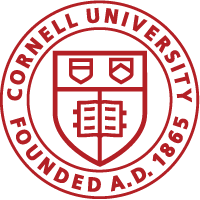Ned Place, Ph.D., M.D.

Professor
Director, Diagnostic Endocrinology Laboratory
Department of Population Medicine and Diagnostic Sciences
Ned J. Place LabCornell University College of Veterinary Medicine
Ithaca, NY 14853
Profile
Research/Clinical Interests
My principal area of interest is mammalian physiology and behavior, with a focus on the life history trade-offs associated with the timing of hormone secretion, reproductive effort, and aging. We perform integrative studies at the molecular, cellular, and organismal levels to elucidate the mechanisms that underlie reproductive aging. I pursue basic research that is integrative and comparative, while also being biomedically and ecologically relevant.
My lab generally follows Krogh’s Principle: “For a large number of problems, there will be some animal of choice, or a few such animals, in which it can most conveniently be studied.” (1929).
Education
- B.S. - 1982 State University of New York, Albany - Biology
- M.D. - 1987 University of Rochester - Medicine
- Ph.D.. - 2000 University of Washington - Zoology
Biography/Professional Experience
- 1987 - 1991: Resident, Obstetrics/Gynecology, University of Connecticut Health Sciences Center
- 1991 - 1995: Obstetrician/Gynecologist, Ob-Gyn Associates, Waynesboro, VA
- 1997- 2000: Clinical Instructor, Obstetrics and Gynecology, University of Washington
- 2000 - 2004: Postdoctoral Fellow, University of California, Berkeley
- 2004 - 2011: Assistant Professor, Cornell University, Department of Population Medicine & Diagnostic Sciences
- 2004 - present: Director, Endocrinology Section, Animal Health Diagnostic Center
- 2011 - 2019: Associate Professor, Cornell University, Department of Population Medicine & Diagnostic Sciences
- 2019 - present: Professor, Cornell University, Department of Population Medicine & Diagnostic Sciences
Awards and Honors
- Medical Student Oncology Fellowship, Hammersmith Hospital, London, UK 1985
- Excellence in Endoscopy Award, American Association of Gynecologic Laparoscopists 1991
- Fellow, American College of Obstetricians and Gynecologists 1993 - 2003
- Richard C. Snyder Award in Zoology, University of Washington 1997
- National Research Service Award, Individual NRSA Postdoctoral Fellowship 2001 - 2004
- Best Trainee Poster Award, Society for Behavioral Neuroendocrinology 2003
- National Institute on Aging, Summer Training Course in Experimental Aging Research, Selected Participant and Travel Award 2005
- American Federation for Aging Research, Travel Award to AFAR Conference Seeking Biomarkers of Aging and Diseases of Aging 2007
Professional/Academic Affiliations
- American Association for the Advancement of Science
- International Society of Wildlife Endocrinology
- Society for Behavioral Neuroendocrinology
- Society for Integrative and Comparative Biology
- Society for the Study of Reproduction
- The Endocrine Society
Publications
Selected Publications
- Place NJ, Cheraskin J-L, Hansen BS. (2019). Evaluation of combined anti-Müllerian hormone and progesterone concentrations for the diagnosis of ovarian remnant syndrome in dogs. J Am Vet Med Assoc. 254:1067-1072.
- Forshey BS, Moraes CR, Lakritz J, Pinto CRF, Coffman E, Schanbacher BJ, Place NJ and Coutinho da Silva MA. (2018). Embryo production by superovulation and dual siring in alpacas (Vicugna pacos). Small Rumin Res. 162:63-68.
- Place NJ, Crosier AE, Commizzoli P, Nagashima JB, Haefele H, Schmidt-Küntzel A and Marker LL. (2017). Age-associated and deslorelin-induced declines in serum anti-Müllerian hormone concentrations in female cheetahs, Acinonyx jubatus. Gen Comp Endocrinol. 250:54-57.
- Lewis SL, Holl HM, Streeter C, Posbergh C, Schanbacher BJ, Place NJ, Mallicote MF, Long MT, and Brooks SA. (2017). Genome wide association study reveals risk locus for equine metabolic syndrome in the Arabian horse. J Anim Sci 95:1071-1079.
- Franco M, Contreras C, Place NJ, Bozinovic F, and Nespolo F. (2017). Leptin levels, seasonality and thermal acclimation in the Microbiotherid marsupial Dromiciops gliroides: does photoperiod play a role? Comp Biochem Physiol A 203:233-240.
- Nagashima J, Hansen B, Songsasen N, Travis AJ and Place NJ (2016). Anti-Müllerian hormone in the domestic dog during the anestrus to estrus transition. Reprod Dom Anim 51:158-164.
- Roosa KA and Place NJ (2015). Mate preference for dominant vs. subordinate males in young female Syrian hamsters (Mesocricetus auratus) following chemically-accelerated ovarian follicle depletion. Physiol Behav 152:41-46.
- Roosa KA, Zysling DA, and Place NJ (2015). An assessment of anti-Müllerian hormone in predicting mating outcomes in female hamsters that have undergone natural and chemically-accelerated reproductive aging. Gen Comp Endocrinol 214:56-61.
- Lewin NS, Treidel LM, Holekamp KE, Place NJ, and Haussman MF (2015). Sociological variables predict telomere length in wild spotted hyenas (Crocuta crocuta). Biol Lett 11:20140991. (Featured in Science on SCIENCESHOT).
- Randolph J, Lamb SV, Cheraskin JL, Schanbacher BS, Salerno VJ, Mack K, Scarlett JM, and Place NJ. (2015) Free thyroxine concentrations by equilibrium dialysis and chemiluminescent immunoassays in 13 hypothyroid dogs testing positively for thyroglobulin antibody. J Vet Intern Med 29:877-881.


